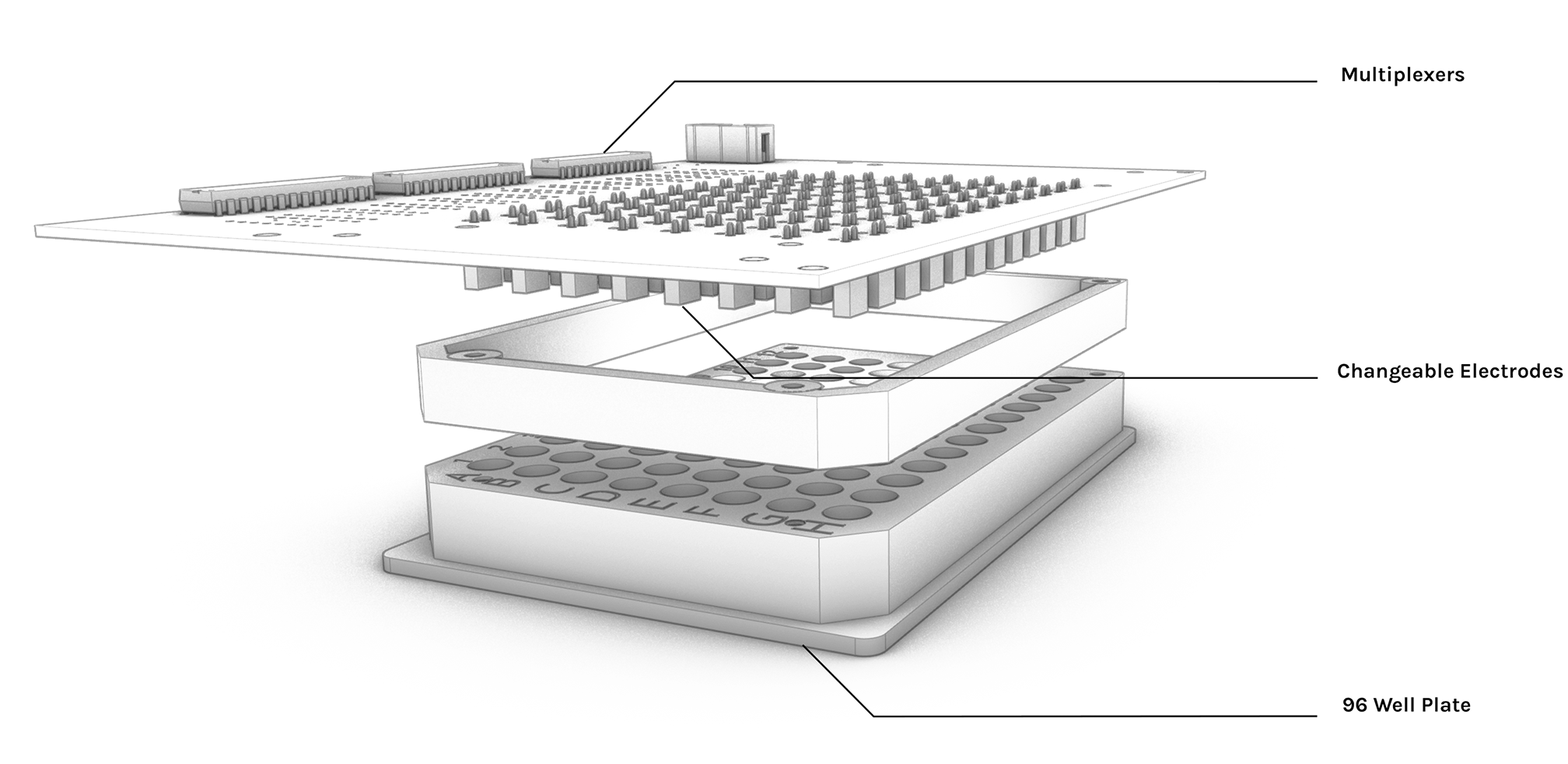Contributions |
About
Our work consist in the making of a modular toolkit for electrogenetics. Our toolkit consists of standard and modular genetic parts that convert an electrical signal into a biochemical one. This processed signal is then outputted as an electronically readable signal.
To do that, we designed, built and tested these constructs, made a serie of electronic hardware that were rigorously tested. They have been proved useful in exploring scientific questions involving electrical signals in bacteria.
We developed a software to control each part of the project.
Overall, we believe that our toolkit is enabling electro-genetics in IGEM and within the greater context of life science research by significantly lowering the cost of entry to this field and characterising existing electro-genetic systems.
The Paris Bettencourt Electro-Genetics Collection |
We submitted a characterized collection of parts for Electro-Genetic signal processing. For an overview of the functioning of our collection, See our Proof of Concept, for a detailed list of parts, visit our part collection
This collection is comprised of parts of the following types:
- 8 Inputs
- 3 Processors
- 3 Outputs
- 19 Electro-regulated Promoters
- 3 Vectors
- 22 Basic parts
The input refers to devices or parts that can transcribe an electrical signal into the production of a protein.
The processor refers to information processing circuits that receive and transform signals from the Input components.
The output refers to a circuit receiving biochemical signals from the processor and translating them into electronically readable ones
The electro-regulated promoters extend the scope of possible electro-genetic systems available to synthetic biologists. We used our custom-made hardware to screen a collection of 500 E. coli promoters for their response to exposure to AC current. This experiment yielded 19 Electro-responsive promoters (8 inducible and 11 repressible). We further characterized these promoters by exposing them to varied electrical conditions.
The Vectors we use are set of compatible vectors for extending our collection,
The basic parts of our collection were used to construct electro-genetic circuits.
The Hardware Collection |
To interface living system with digital technologies, specific hardware and software needed to be developed.
We created a collection of
electronic devices that enable:
- Timed and controlled exposure of bacteria to electrical signals in solid cultures and under a microscopic setup
- Timed and controlled exposure of bacteria to electrical signals in liquid cultures and though a high throughput approach
We adapted expensive hardware from electrochemistry into a cheap and accessible open source solution.
We showed that this device was capable or retrieving information about the cell density of cultures through measuring the resistance of the media.
We developed a software tool to plan and execute experiments
To run some experiments, we produced a serie of 3D printed devices that facilitate the use of previously existing hardware and materials designed and developed for this study

Standardisation of the signal processing pipeline |
We designed and built a toolkit for assembling modular Electro-Genetic signal processing systems composed of Input, Processor and Output parts. These individual components have been thought of as electronic components in a robotic workshop. Electronic designers, synthetic biologists are able to assemble and swap these parts to create complex circuits.
We have described a standard interface between the component in the form of pairs of promoters and their cognate transcription factor. (See our engineering page)
We characterised the individual components as well as their assembly. (See our Proof of concept)
